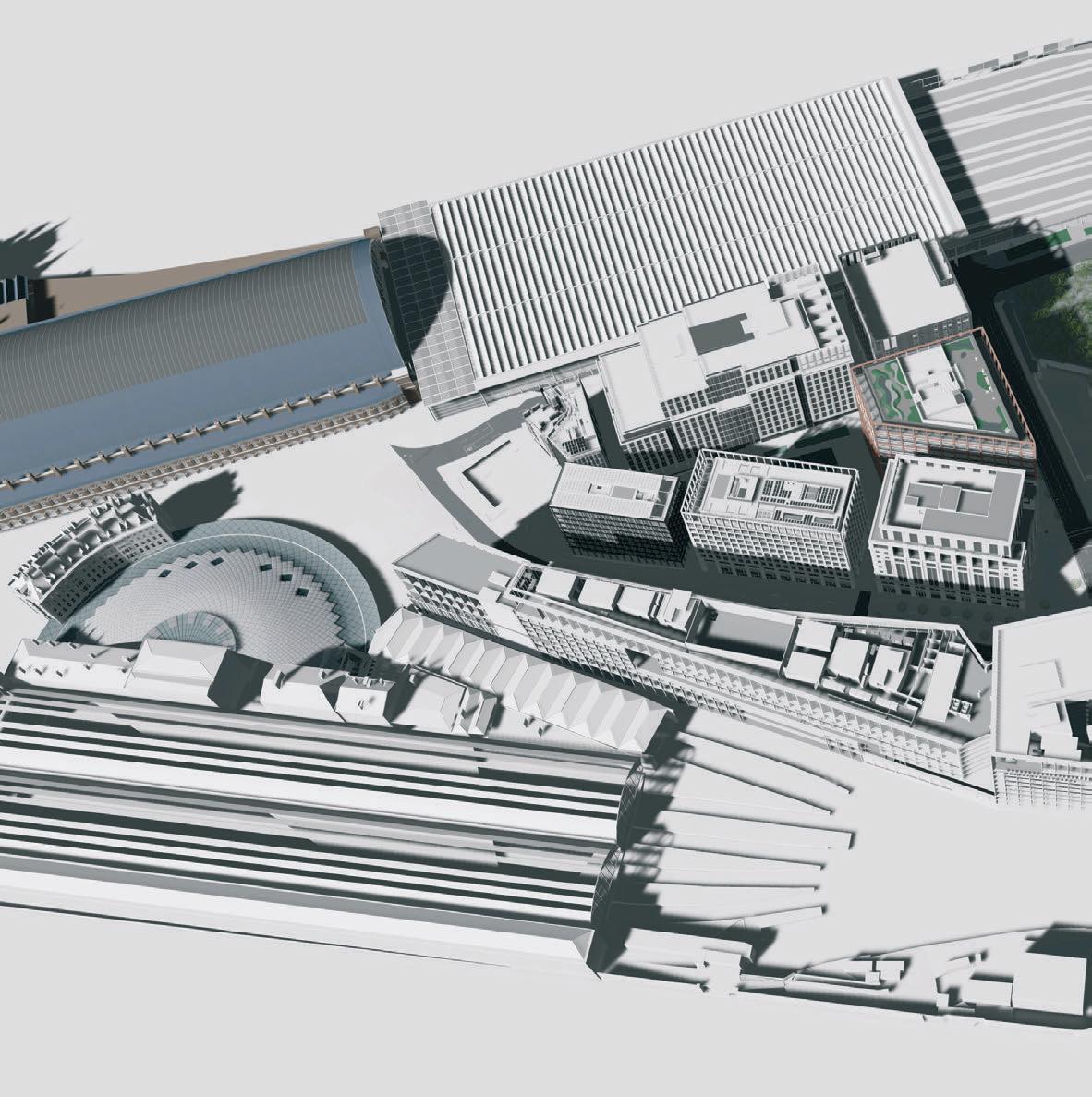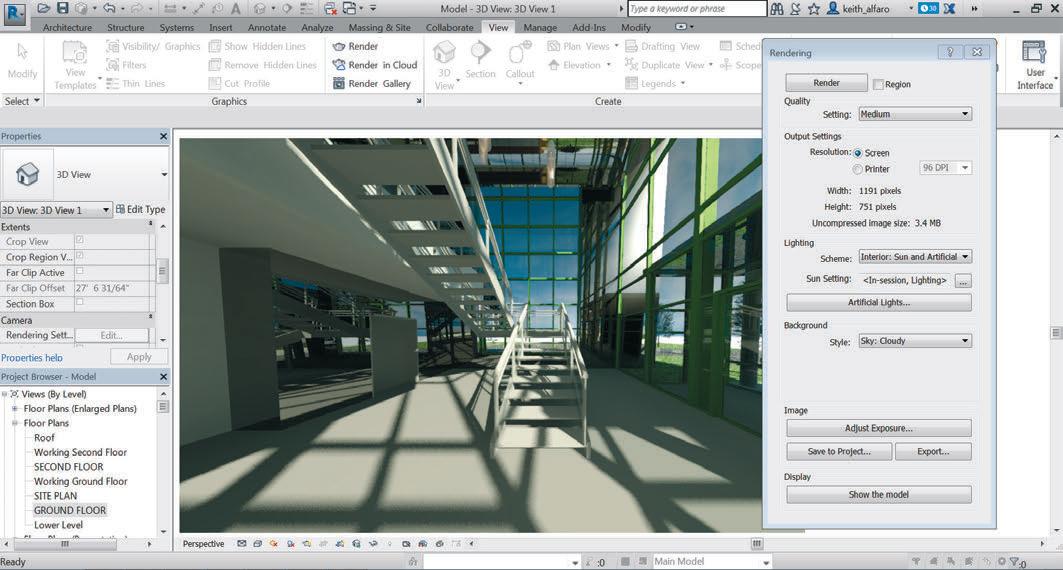
6 minute read
abroad
A BIM teacher abroad
While the UK has taken the lead in terms of BIM adoption, we have much to learn from China, where a flurry of projects of staggering size and speed of delivery offers the chance to challenge and refine established approaches.
by Paul Woddy
Over the last such, then we cannot eighteen months, About the author be complacent, even for one second. White Frog Paul Woddy, director at I have personally consultants and train- White Frog Publishing, seen a lot of China ers have been increasingly busy overseas, has advised hundreds of companies on implementation and deployment of recently, and the contrast between especially in the Revit and BIM in over a what I find there emerging markets of decade as a consultant. and in the UK when Asia and the Middle it comes to BIM East, where audiences adoption and teachare desperate for BIM knowledge and to ing in general is stark, even if they are learn lessons from the world-leading looking at many of our processes and stance that the UK has taken. standards to inform how they do it.
But this is by no means a one-way flow Understanding these differences has of information. In fact, we in the UK been key to us in developing our busiwould do well to learn from the ness in China and has meant that we approaches taken in some countries. have had to adopt a radical business There’s an opportunity here, after all, to model in response. It’s one that we are take what we have done before and not now reviewing with an eye to bringing just repeat it, but refine and enhance it. If aspects of it home with us for the we want to be the best and remain as European market. What’s so different? In the UK, we talk about the central government as a big client and hence an important influence in the adoption process. We have, after all, a history of defining standards and best practice on the back of projects where the government is client.
In particular, large-scale infrastructure development projects such as Heathrow Terminal 5, Crossrail and soon HS2 have been, or will be, used to explore and test new processes and techniques, as well as prove or disprove new technological solutions. Many of these lessons and resulting standards will live on for many years, feeding the next generation of projects until the next big job pushes things further.
The scale, quantity and sophistication of comparable national infrastructure projects funded by the central Chinese government makes our work in the UK seem akin to building a garden shed — and tak-
ing our time about it!
The facts are staggering: China has been opening airports at a rate of 10 to 15 per year for the last decade, with many of them the size of Heathrow, yet few people outside China have even heard of them. The Chinese have constructed over 3,000km of underground and overground urban railway lines across 22 cities, with plans to treble the network in Beijing and other major centres. They already have over 16,000km of high-speed railway lines, with a factory production process continually adding more in a way that has to be seen to be believed.
You could argue that this pace of development might mean that the Chinese are moving too fast to learn lessons from mistakes and innovations, but it undoubtedly means that a new project will soon come around on which to test out emerging theories. Add to this mix a central government structure that makes it easier to move quickly on decisions and you have an amazing opportunity for major process improvement.
Every five years, the Chinese government publishes a plan which covers the intention and investment focus of upcoming initiatives. The recent five-year plan, published in 2016, includes the goal: “Innovation: Move up in the value chain by abandoning old heavy industry and building up bases of modern informationintensive infrastructure.”
Whilst the remit of this statement is broad, it does mean that the adoption of BIM is front-and-centre of the government’s future plans in the AECO sector, and when the Chinese make plans like these, it not only affects those involved in public work, but the private sector as well, where demonstrating alignment with government plans helps to cut through red tape on any project.
Nor is the Chinese government afraid to intervene in the industry. It is happy to be hands-on in dictating protocol and process, unlike the comparatively gentle guidance approach taken by the UK government in such matters. The Chinese have gone so far as to create a single official entity to certify and verify BIM capability — something that we desperately need in this country. The government also gets involved in teaching strategy, recently announcing a desire to see more vocational courses alongside the pure academic education which has been traditionally the only option.
I recently visited Tsinghua University, which has just been upgraded in the rankings to the world’s 18th best university. There, we find a commercial architectural practice inside the School of Architecture, staffed by a mixture of full-time professionals, lecturers and students. They compete for work on the open market and live projects are used as learning aides, with all students rotating through the office during their studies. This is an inspirational learning environment.
At White Frog, we predominately teach teachers, and write materials for others to deliver, hence we are used to lighting the torch and seeing others run with it. In China, however, we have gone back to the coalface, to study how our existing materials are received and where we have to adjust our delivery models to suit cultural differences.
What we have found was a very different approach to learning, with much more desire to be learning in the classroom, as they see this as the way to advance their career and stand out in the (very large) crowd. It highlighted to me how often we see delegates attending training in the UK because they have been instructed to do so, rather than because they want to be there.
Once in the classroom, there is a greater reliance on taught theory, as opposed to being pointed towards a topic and left to research it under your own steam, or to discuss and come to a combined conclusion. Another difference we have had to deal with is that, due to the communist structure, it is not expected that people should pay for knowledge, but rather that it should be provided — people will pay to travel to an event where they will learn, but expect attendance to be free. That said, they are happy to pay for gaining qualifications, as again, this provides a means to climb the ladder.
This shift in education style requires a new way of looking at training materials, and in response, we have had to build new courseware as well as look at how we make money from it. After much research and in conjunction with BIM Academy, White Frog has developed a Virtual Project training course, aimed at those wanting to simulate the BIM process. We use a combination of lectures, software exercises and round-table discussions to understand all the relevant standards and protocols from the UK, and explore a range of software to collate and view a project from every angle – from concept through to FM, with the collaborative data management required to deliver at each stage.
We’ve already run beta tests of the course simultaneously in Beijing and at Northumbria University here in the UK, with great success. With the various formats and methods employed in the materials, along with the certification that we are launching on the back of successful course completion, we are confident we have something that works for both markets. Our only hurdle now is to figure out how to sell it…








